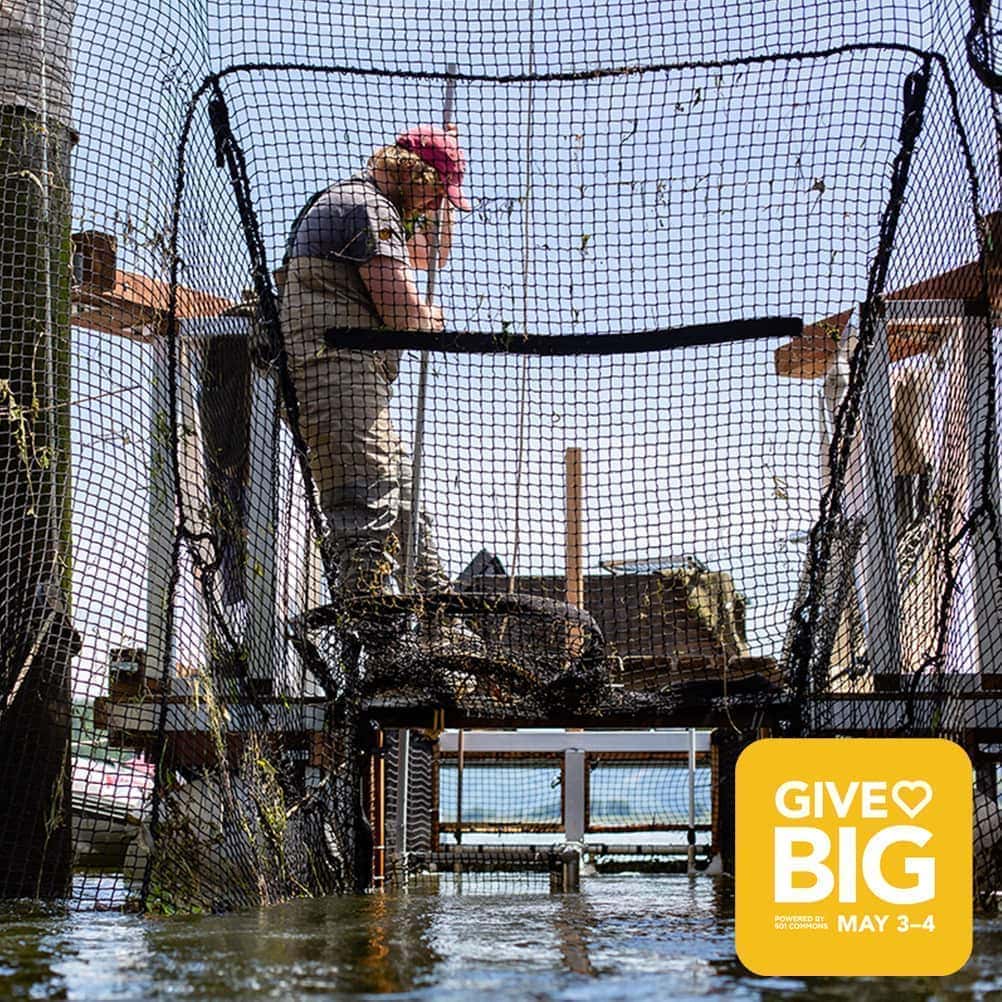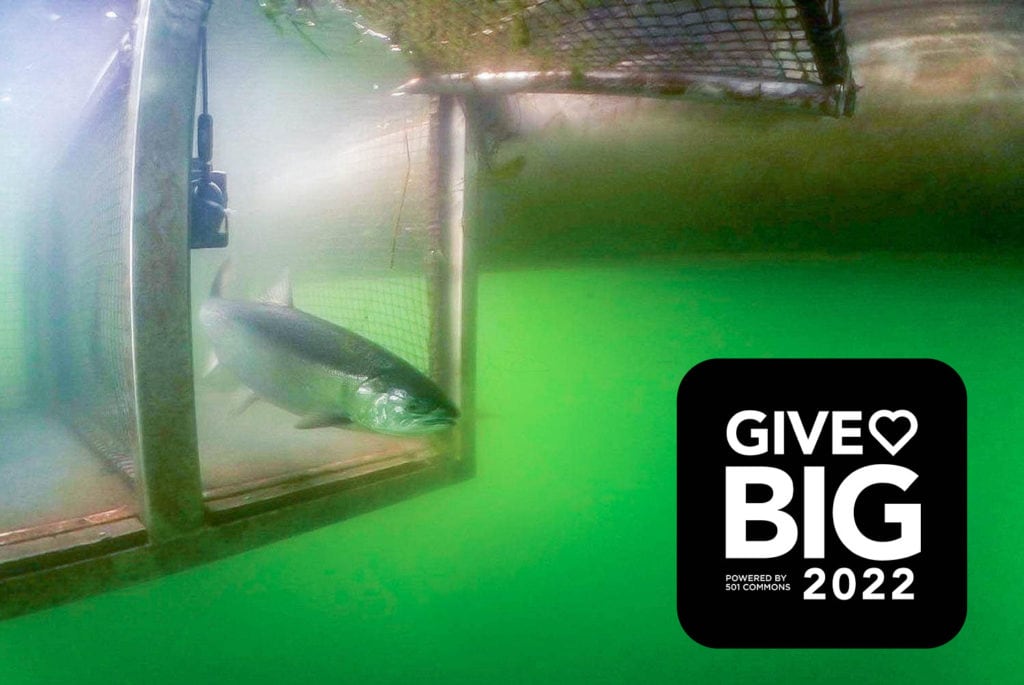
In celebration of today’s May 3-4th Give Big event, we have a major milestone to share that is a direct result of your support during this annual community fundraising event.
Several years ago, during Give Big!, we reached out with an urgent request— help the Fish Trap Project move forward. Since 2016, Wild Fish Conservancy has been working alongside local commercial fishers on the Columbia River with the ambitious objective of developing a commercial fishing technique that can aid wild fish recovery by eliminating factors that harm threatened and endangered salmon and steelhead in commercial fisheries.
At the time, our staff had just finished implementing over a year’s worth of planning, retrofitting an existing experimental fish trap on the Columbia River with an innovative new ‘passive capture technique’ engineered to even further improve survival of wild salmon and steelhead over previous outstanding results.
With only a month to go before our most crucial fish trap research season to date, we faced a major obstacle. Even with the trap fully constructed, the research couldn’t move forward unless we could raise the last remaining funds required to effectively executive the season’s research.

When we reached out to you that year during Give Big! asking for your support, we were overwhelmed by your response. In less than two weeks, our supporters came together to raise over $50,000 in funding making it possible for our research to move forward and for our research team to tag and genetically sample over a hundred Chinook salmon that had been captured using the new passive capture technique.
This week, after a two year wait for the results of this research effort, we finally received the results from the genetics lab that were necessary for completion of the bycatch survival analysis. We are thrilled to share that 100% of the spring-run and summer-run Chinook salmon tagged and released using the new passive capture technique, survived the 109-mile, 7-day upstream migration toward spawning grounds above Bonneville Dam.
Learn more about these results in our newest Fish Trap Journal post.

No other gear has ever achieved these survival rates in the Columbia River and these preliminary results provide some of the most irrefutable and persuasive evidence to date that passively operated fish traps provide enormous opportunity for communities in the Columbia River to sustainably target hatchery populations of salmon, while eliminating mortality to threatened and endangered wild salmon and steelhead that co-mingle in the river.
WFC biologists are now working to finalize our analysis for peer-review and publication. These new results validate findings of previous studies that have consistently shown post-release survival effect nearing 100% for adult fall-run Chinook, Coho Salmon, Sockeye Salmon, and summer-run Steelhead released from passively operated fish traps on the Columbia River.
Beyond the Columbia River, these results will have enormous implications for the recovery of wild salmon throughout the northwest. Already, WFC’s fish trap research has helped inspire revitalization of this historical indigenous fishing practice from Oregon to British Columbia, with two fish trap projects moving forward in 2022 in partnership with First Nations on the Fraser and Skeena Rivers.
We are enormously grateful for the dedication and support of everyone who helped make these remarkable results possible. This is a powerful example of why your support and investment in Wild Fish Conservancy’s work is vital to driving forward solutions at a coastwide scale to some of the most complex and entrenched issue facing wild fish today.
If you value our work and science-based approach to wild salmon recovery, please consider making a donation by tomorrow during the 2022 Give Big event to help continue this incredible momentum and success for wild fish and all who depend on them.
Join our mailing list to recieve important updates on our work, the latest wild fish news, & opportunities to take action to support wild fish.
This site is protected by reCAPTCHA and the Google Privacy Policy and Terms of Service apply.
Wild Fish Conservancy is recognized as a 501(c)3 non-profit by the IRS